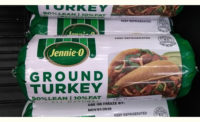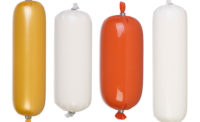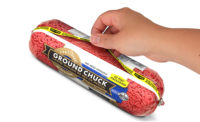Packaging Tech
Meat packaging technology: Chubs move up innovation ladder

New advancements are propelling the growth of the well-established chubs packaging format.
Chubs, a well-established packaging format, are in growth mode and embracing new technology. In fact, growth in the chub segment is helping erode the dominant market share enjoyed by polyvinyl chloride film wrap packs. According to the latest National Meat Case Study by Sealed Air/Cryovac Food Care, chubs owned 7 percent of the market in 2015, up from 6 percent in 2010 and 4 percent in 2007, according to statistics reported at the Annual Meat Conference 2016, held Feb. 21-23 at the Gaylord Opryland Resort and Convention Center, Nashville, Tenn.
Today, brand owners can take advantage of the latest technology in film, sealing/clipping systems, automated case loading and quality control.
A recently developed film combines excellent slip characteristics with a high oxygen barrier to run more smoothly on high-speed equipment and extend shelf life by several days. Longer shelf life means less waste, potentially larger distribution areas and higher sales. The film can be clear for bulk packages or produced in a range of colors for retail packs.
Automated heat-seal and clipping systems improve productivity and cut packaging costs by running lower cost rollstock. Film can be printed or unprinted, mono- or multilayer. Heat sealing occurs at a rate of up to 30 meters per minute for chub diameters ranging from 20 to 120 millimeters. A touchscreen operator interface integrates and simplifies sealer/clip applicator operation and stores product recipes for quick recall.
Robotic systems automate manual case loading. Single or dual delta-style robot systems combine small footprint and hygienic design. Dual-robot systems pick and place up to 200 chubs per minute.
But the biggest advances appear to be in quality control where periodic testing of lean/fat ratios and other characteristics is being replaced by online analysis. Designed to be installed at the beginning of the line and work in real time, analyzers rely on interactance spectroscopy to analyze light in the visible-near infrared range to measure fat, collagen, protein and moisture content. With a throughput of up to 30 tons of meat per hour, the system ensures product consistency, manages data, generates reports and helps optimize the curing process.
X-ray inspection systems also can provide inline fat measurement along with contaminant detection. Applications include fresh, chilled, frozen and hot-boned loose bulk, frozen or tempered (“naked”) meat blocks and unwrapped meat in plastic crates. Today’s highly reliable X-ray inspection systems are less expensive and easier to use than earlier models. More importantly, X-ray systems not only detect metal contaminants, but also find non-metal foreign materials such as glass, stone, bone and plastics. In addition, X-ray systems can confirm weight and identify incomplete or flawed product.
Other quality control improvements center on more sensitive metal detection, particularly for difficult-to-inspect products. The improved metal detection capabilities stem from multi-frequency technology, digital technology, software advances and automated performance testing. Upgraded software algorithms calculate signal strength based on time and amplitude to improve performance by at least 40 percent. As a result, false rejects plummet and return on investment accelerates.
Other systems convert the electromagnetic signals generated by the product to a visual electromagnetic signature. The resulting “picture” of the product being inspected is easier to interpret than the typical bar chart or numerical graph displayed by earlier metal detectors. Once the signal data is digitized, algorithms in the software complete the image and identify any contaminants. Capturing previously hidden data means smaller fragments can be detected and overcomes issues with fixed thresholds and phase angles, which can cause tiny fragments to be overlooked. The enhanced software also provides guidance about test sample sizes and can alert the operator about any deviation in the product or system and its source to ensure compliance with food safety standards is maintained. Metal detectors capable of generating a visual electromagnetic signature reportedly cost less than the lowest priced X-ray inspection unit and are easy to operate.
So, although chubs are well-established, production, handling and quality control are taking advantage of the latest materials, equipment and software advancements. NP
Looking for a reprint of this article?
From high-res PDFs to custom plaques, order your copy today!





